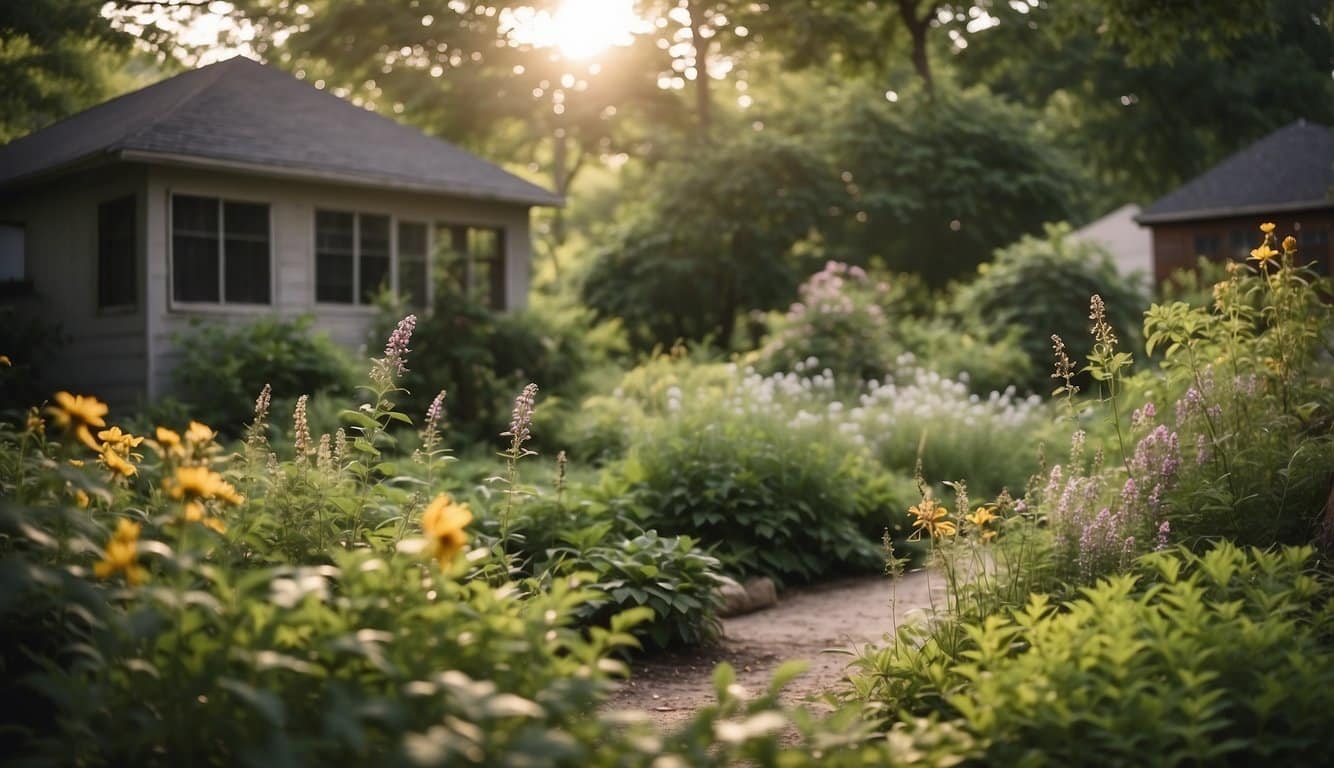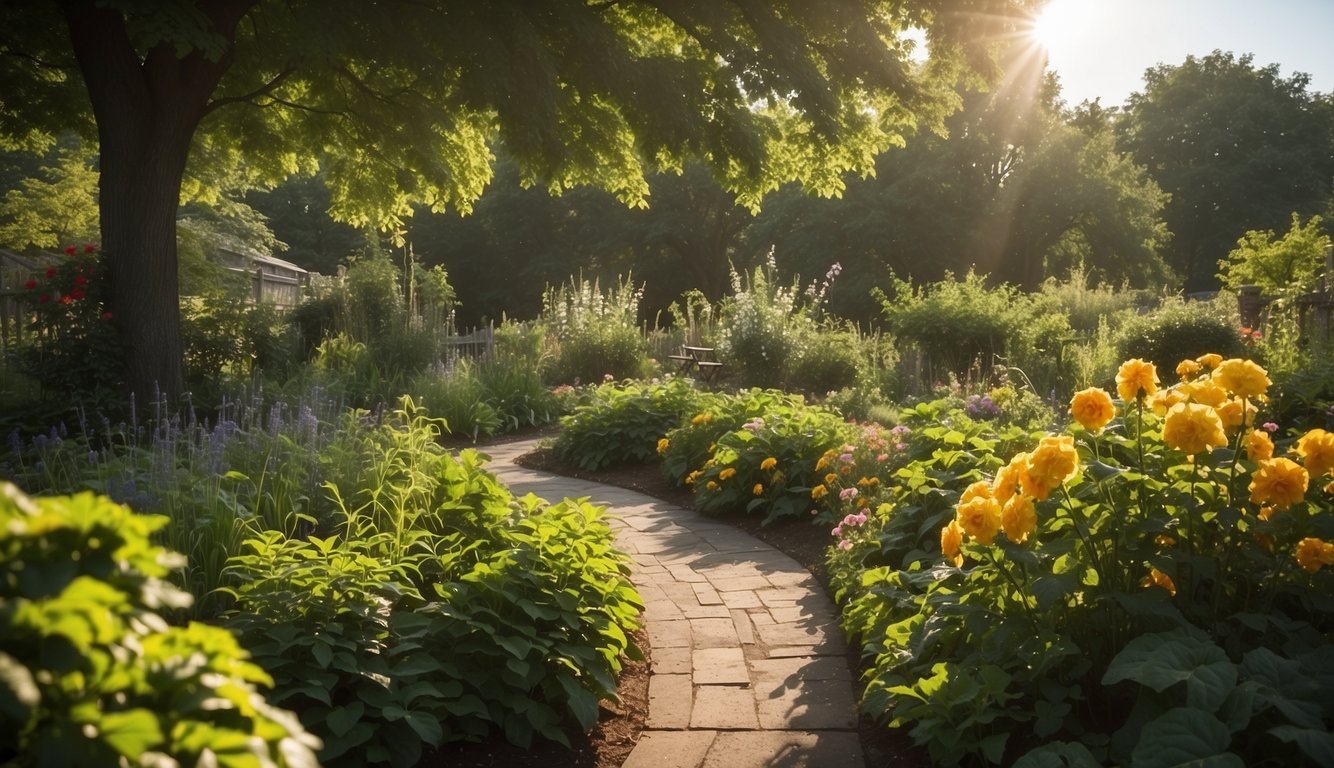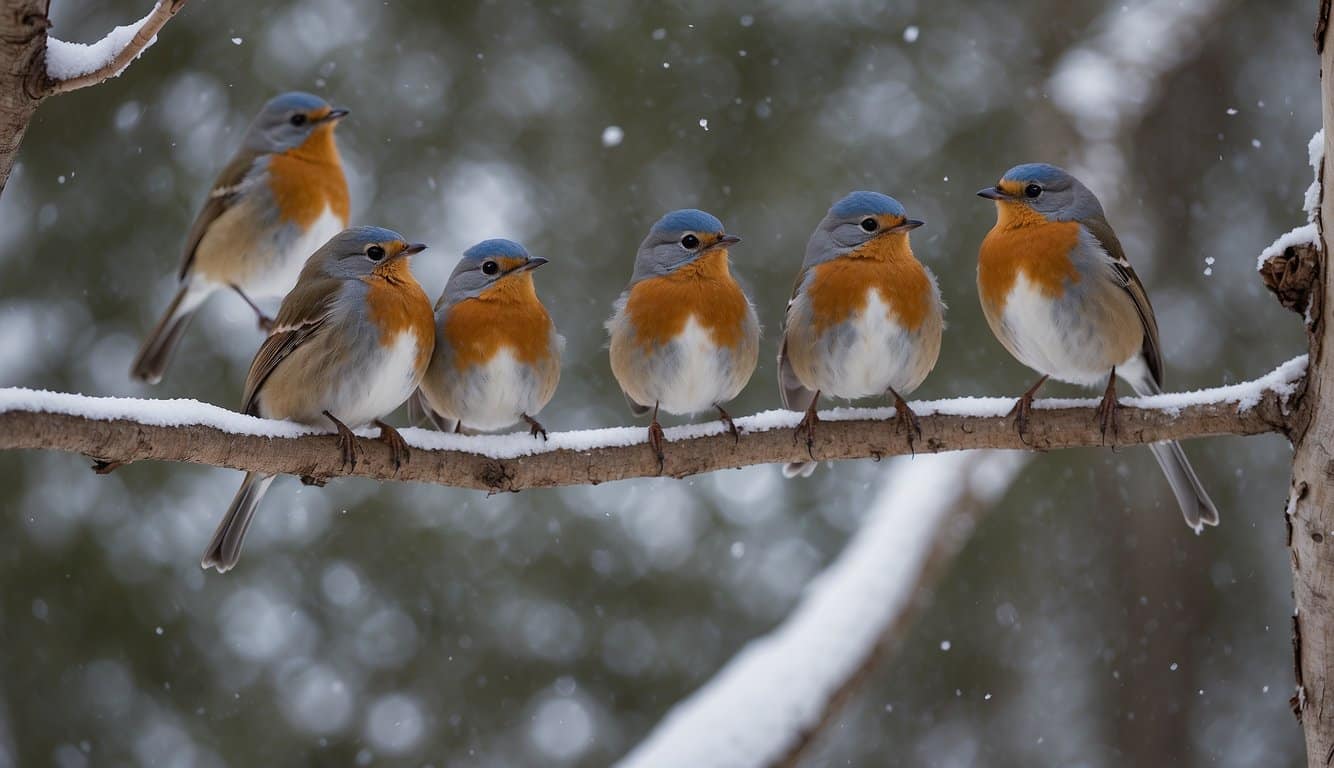Illinois Wildlife: 101
When you’re creating a wildlife-friendly yard in Illinois, it’s vital to recognize the diversity of species that you might encounter or support.
Illinois is home to a wide range of habitats, from urban areas to rural countryside, which host an array of wildlife including mammals, birds, amphibians, insects, and more.
Common Wildlife in Illinois:
- Mammals: White-tailed deer, raccoons, opossums, and squirrels.
- Birds: Cardinals, blue jays, various species of woodpeckers, and robins.
- Insects: Monarch butterflies, bees (crucial pollinators), and praying mantises.
- Amphibians: Frogs and salamanders, especially near water bodies.
Wildlife Needs:
- Food: Native plants provide nectar, seeds, berries, and insects.
- Water: A simple birdbath or small pond supports many species.
- Shelter: Trees, shrubs, and brush piles offer nesting sites and protection.
- Space: Wildlife prefers natural, layered landscapes for breeding and feeding.
By understanding these needs, you can tailor your garden to become a nurturing haven. Remember, your actions have a direct impact on local biodiversity.
Planting native species and minimizing disruption can encourage wildlife presence in your yard. Additionally, reducing chemical use protects the intricate ecosystems these animals rely on.
Responsible wildlife management begins with knowledge and empathy. As you shape your garden, think of it as a shared space where you have the privilege to coexist with Illinois’s rich wildlife tapestry.
Designing for BioDiversity
Creating a wildlife-friendly yard requires a focus on diversity, ensuring that you provide a range of habitats for different species. By selecting appropriate plants and structuring your vegetation, you can turn your Illinois yard into a sanctuary for local wildlife.
Native Plant Selection
When choosing plants for your yard, prioritize species native to Illinois. Your selection should serve the dual purpose of providing food and shelter to the native wildlife. Here’s what to keep in mind:
- Choose a variety of plants: Include trees, shrubs, flowers, and grasses to cater to the needs of various animals.
- Season-long support: Select plants that offer resources throughout the seasons, such as spring nectar, summer berries, or winter shelter.
Beneficial Native Plants for Illinois Yards:
| Type | Examples |
|---|---|
| Trees | Bur Oak, Red Maple, Serviceberry |
| Shrubs | Viburnum, Dogwood, Ninebark |
| Flowers | Purple Coneflower, Black-eyed Susan, Phlox |
| Grasses/Sedges | Little Bluestem, Prairie Dropseed |
Layered Vegetation
A layered approach to vegetation mimics natural ecosystems and maximizes habitat potential:
- Canopy layer: The tallest trees in your yard. These are paramount for birds of prey and other canopy-dwelling species.
- Understory layer: Made up of smaller trees and large shrubs, offering nesting sites for birds and mammals.
- Shrub layer: Provides cover and food resources for wildlife at a lower level.
- Ground layer: Consists of grasses and flowering plants, critical for pollinators and ground-nesting species.
Creating Habitats
In a wildlife-friendly yard, providing diverse habitats is crucial for attracting and supporting different species. Water sources and shelter are two key elements that will turn your yard into a welcoming environment for wildlife.
Water Sources
Incorporating water features is essential for a thriving habitat. Birds, insects, and small mammals all need access to clean water for drinking and bathing.
- Birdbaths: Ensure they are 2 to 3 inches deep with a wide edge for perching. Clean and refill water every few days.
- Garden Ponds: Installing a small pond can offer both a water source and habitat for aquatic species. Use a pump to keep water clean and prevent mosquitoes.
Bonus Tip: Uneven edges in ponds allow different species to access the water safely.
Shelter and Nesting Sites
Shelter is necessary for protection against predators and harsh weather, as well as a place for rearing young.
- Planting Native Vegetation:
- Trees and shrubs: Offer nesting sites and cover.
- Layered vegetation: Provides varying levels of shelter and food sources.
- Artificial Structures:
- Birdhouses: Can attract specific bird species to your yard based on design and placement.
- Brush piles: Create an easy refuge for small mammals and insects.
Maintaining a Wildlife-Friendly Yard
Creating a sanctuary for wildlife in your Illinois yard involves commitment beyond the initial setup. To keep your space thriving and beneficial for local species, here’s how you can maintain it effectively.
Sustainable Practices
Diverse Plant Selection: Embrace a variety of native plants, as they require less water, resist local pests better, and offer year-round food and shelter to wildlife. Consult the Illinois Native Plant Society for suitable options.
Composting: Utilize composting to enrich your soil naturally. It reduces the need for chemical fertilizers, which can harm wildlife.
- Leaves and Grass Clippings: Return these to your garden; they act as natural mulch and enhance soil health.
Pesticide Alternatives: Use organic pest control methods; chemical pesticides can be lethal to the creatures you’re aiming to protect. Physical barriers and beneficial insects can be effective substitutes.
| Natural Pest Control Methods | Example |
|---|---|
| Physical Barriers | Floating row covers for plants |
| Beneficial Insects | Ladybugs to eat aphids |
Seasonal Considerations
Water Resources: Birds and other wildlife rely on consistent water sources. In winter, a heated birdbath prevents freezing; in droughts, ensure water availability.
Seasonal Cleanup: Delay trimming plants and clearing debris until early spring. This provides winter habitats for insects and small mammals.
- Fall: Let fallen leaves stay; they shelter overwintering species.
- Spring: Gradually clean to avoid disturbing nesting or newly active wildlife.
Dealing with Pests and Invasive Species
When crafting a wildlife-friendly yard in Illinois, understanding how to manage pests and invasive species is key to preserving your local ecosystem.
Identify Invasive Species:
Firstly, familiarize yourself with invasive plants like the European Buckthorn or Asian Honeysuckle, which often outcompete native flora. Illinois’ Natural Resources website provides a list of plants to watch out for.
Biological Pest Control:
Consider introducing natural predators into your yard to control pests biologically. For example, ladybugs can help limit aphid populations.
Physical and Mechanical Controls:
- Weeding: Regularly remove invasive plants by hand to prevent their spread.
- Barriers: Use fences or nets to protect vulnerable plants from certain pests.
Chemical Controls:
If necessary, use chemicals sparingly and choose eco-friendly options:
- Spot Treatment: Apply herbicides directly to invasive species to avoid affecting non-target plants.
- Insecticidal Soap: This can fend off pests while minimizing harm to beneficial insects.
Cultural Controls:
- Healthy Soil: Maintain a healthy garden ecosystem that naturally resists invasives.
- Native Plantings: Select native plants which usually require less pest control.
Documentation and Reporting:
If you encounter a particularly invasive species, document it and report to local conservation groups or the National Invasive Species Information Center. Your vigilance contributes to statewide efforts to manage these species.
Frequently Asked Questions
When designing a wildlife-friendly yard, your goal is to attract, nourish, and provide a safe haven for local flora and fauna. These FAQs will help guide you toward nurturing a vibrant ecosystem right in your Illinois backyard.
What native plants should I include in my Illinois garden to attract wildlife?
Include a variety of native flowers like Purple Coneflower and Black-Eyed Susan to attract pollinators. Tallgrass prairie plants such as Big Bluestem and Switchgrass offer both food and cover for wildlife.
How can I design a home landscape that supports Illinois native species?
Design your landscape to mimic local natural habitats. Incorporate layered plantings with ground cover, shrubs, and trees, and use mulch to create a flourishing environment for insects and ground-nesting birds.
Which shrubs native to Illinois are beneficial for local bird populations?
Plant shrubs such as the Spicebush and Grey Dogwood, which offer berries for birds.
The dense foliage also provides excellent nesting sites and protection from predators.
What considerations are important for creating a natural prairie landscaping in Illinois?
Choose species that are adapted to Illinois’ climate and soil types.
Integrate a mix of grasses and forbs and maintain open areas with minimal tree cover to replicate prairie conditions.
How can I incorporate butterfly host plants into my Illinois yard for a wildlife-friendly garden?
Select plants like Milkweed and Butterfly Weed as host plants for Monarch caterpillars, and include nectar-rich flowers to feed adult butterflies.
Place these plants in sunny areas protected from strong winds.
What are the top evergreen plants to include in an Illinois wildlife-friendly yard?
Evergreens such as Eastern Red Cedar and American Holly offer year-round shelter and food sources for birds. Plant these to provide continual habitat, especially during the winter months.



